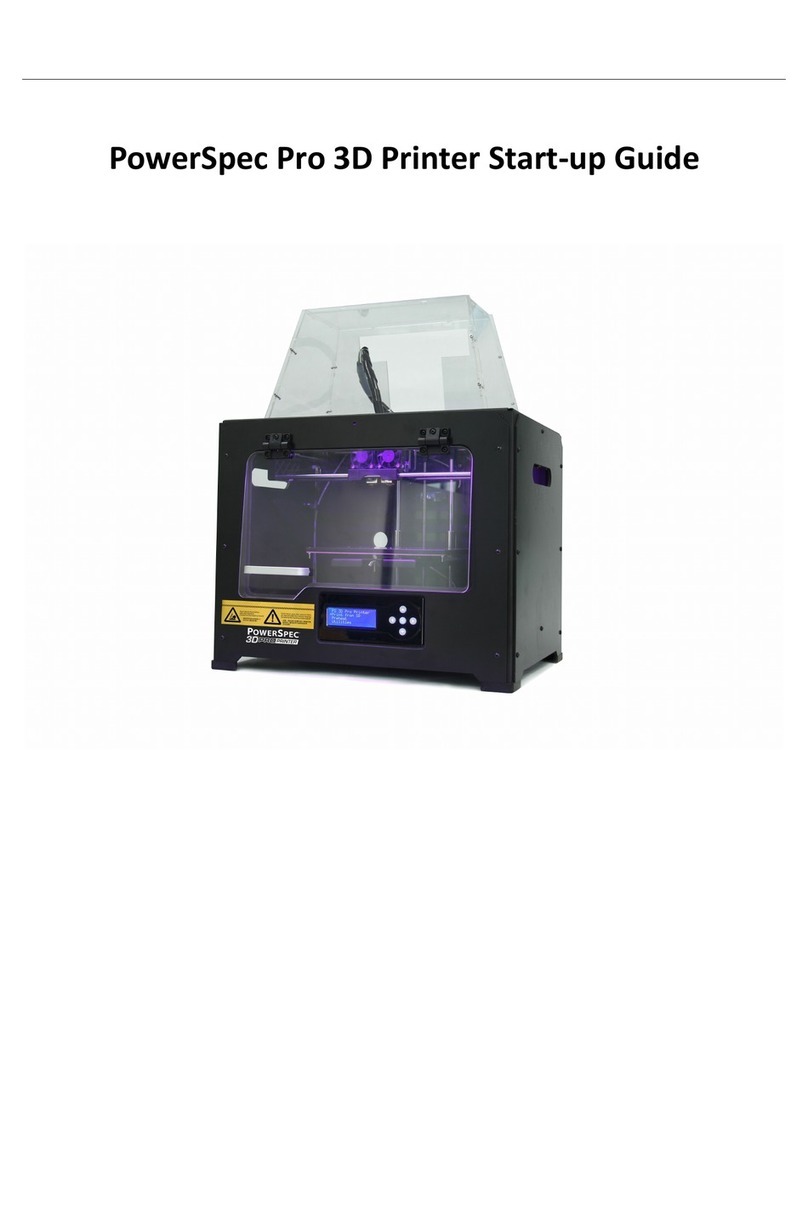
9
Turn and rotate your model
Scale the size of your model
Select right or left extruder you want to print with
Print it directly with your 3D printer or export to your SD card.
You can use Powerprint software to control 3D printer and perform printing tasks.
2.1 Load File
You can load a model file or Gcode file into the software by following any of the following six methods:
A. Click the “Load” button at the top of the software interface and then select the file to be loaded.
B. Select the file to be loaded, and then drag the file to the software interface.
C. Click the “File -> Load File” menu. Then select the file to be loaded.
D. Click the “File -> Examples” menu. Then select the file to be loaded.
E. Click the “File -> Recent Files” menu. Then select the file to be loaded.
F. Select the file to be loaded then drag the file to the software icon.
You can load .stl, .obj, or .fpp model files which are editable using this software. Please refer to Chapter 2.2~2.5
and you can find instructions regarding modifications, such as operations of mouse, changes of view from
different angles, and how to edit and save the file. After modification, please refer to Chapter 2.6 if you want to
slice the model file, generate Gcode, file, or Print it.
Important Note: Gcode files cannot be edited, but you can directly start the printing after loading it into the
software. Please refer to the Chapter 2.6.1 and 2.6.2.2 which tells you how to connect to 3D printer and how to
print the Gcode file.
2.2 Mouse Operations
2.2.1 Left click
A. Select a model by moving the cursor to it and then left click.
B. Select multiple models by holding the Ctrl key and then left click each model you want.
C. Models look brighter when selected.
D. Models can be edited when selected.
E. Left click any blank space to undo the selection of model.
2.2.2 Left click and hold the left button
When changing viewing angles or editing models, different effects will appear by left-clicking and holding
the left button. Please refer to Chapter 2.3.1~2.3.2 & 2.4.
2.2.3 Right click and hold the right button
Same affects as with any operation when right clicking and holding the right button. Please refer to the
Chapter 2.3.1 & 2.3.2.
2.2.4 Scrolling using the mouse wheel
Same affects as with any operations when scrolling using the mouse wheel. Please refer to the Chapter 2.3.3.




























